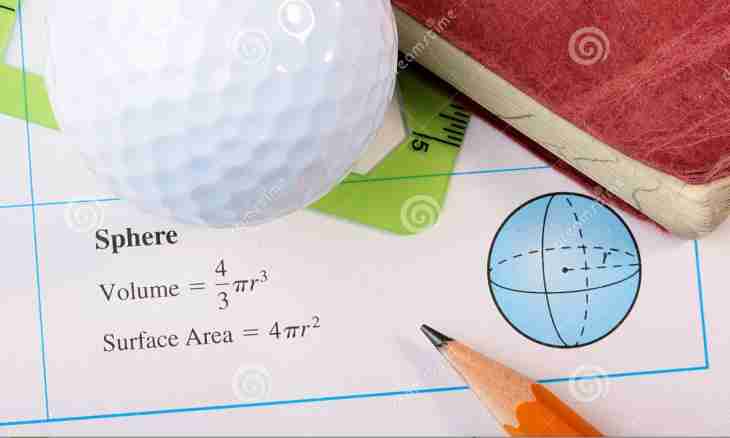The sphere is a simplest volume geometrical figure for which indication of the sizes only one parameter suffices. It is accepted to call borders of this figure the sphere. The volume of the space limited by the sphere can be calculated as by means of the corresponding trigonometrical formulas, and make-shifts.
Instruction
1. Use a classical formula of volume (V) sphere if from conditions its radius (r) is known - build radius in the third degree, increase by Pi's number, and increase result by a third. It is possible to write down this formula so: V=4*π*r³/3.
2. If there is an opportunity to measure diameter (d) of the sphere, then divide it in half and use as radius in a formula from the previous step. Or find the one sixth part from the cubed diameter increased by Pi's number: V=π*d³/6.
3. If the volume (v) of a cylinder in which the sphere is entered is known, then for finding of its volume define what two thirds of the known volume of a cylinder are equal to: V=⅔*v.
4. If the average density (p) of material of which the sphere, and its weight (m) consists is known, then it is enough for scoping too - divide the second into the first: V=m/p.
5. Use any measured tanks as make-shifts for measurement of volume of a vessel of spherical shape. For example, fill it with water, measuring amount of the filled-in liquid by means of measured capacity. Transfer the received value in liters to cubic meters - this unit is accepted in the international SI system for measurement of volume. As translation coefficient from liters in cubic meters use number 1000 as one liter is equated to one cubic decimeter, and them each cubic meter holds exactly one thousand pieces.
6. Use the principle of measurement opposite to described in the previous step if the body in the form of the sphere cannot be filled with liquid, but it is possible to ship in it. Fill a measured vessel with water, note level, ship the measured spherical body in liquid and determine amount of the forced-out water by a difference of levels. Then transfer the received result from liters to cubic meters the same as it is described in the previous step.

